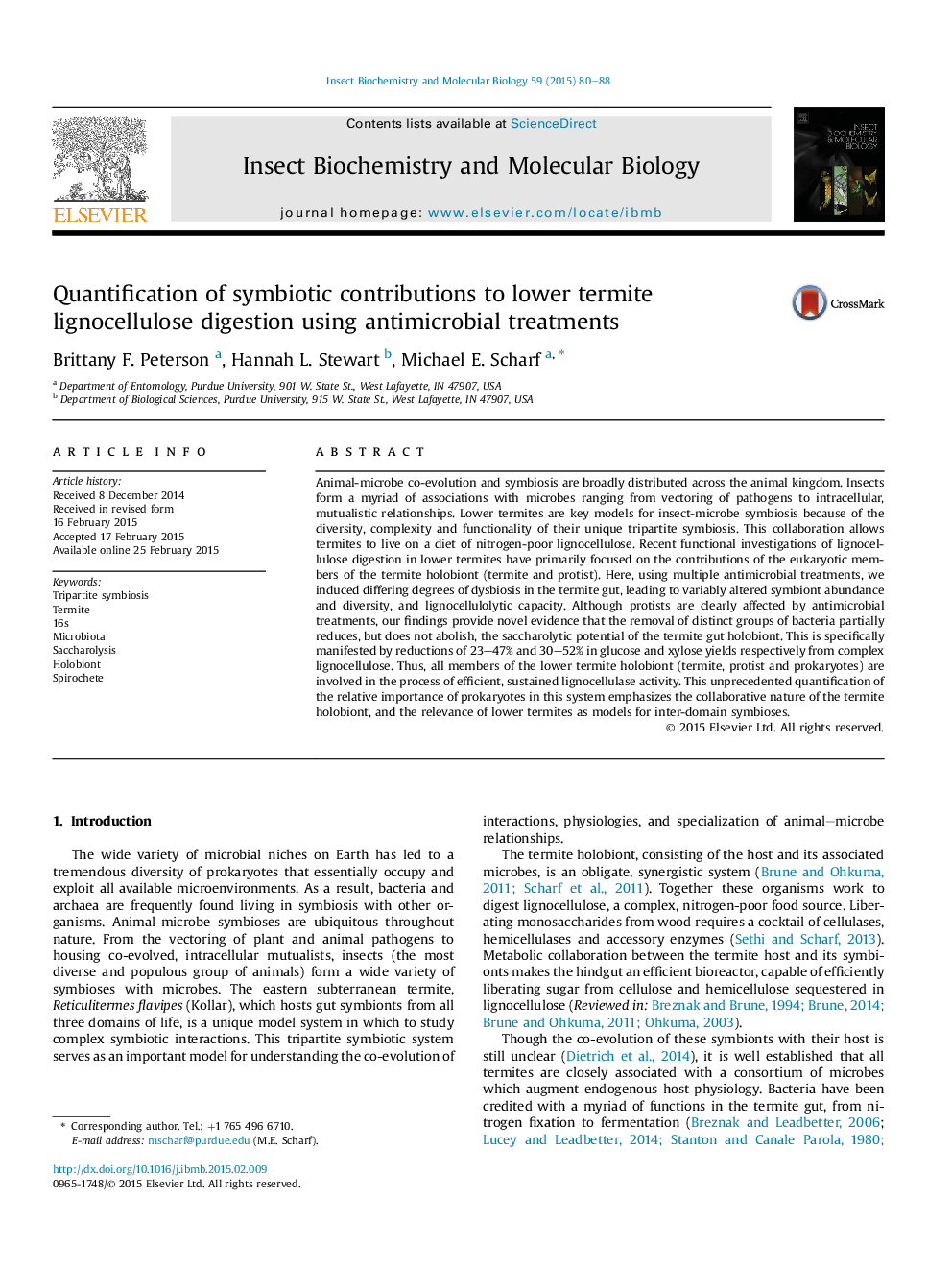| کد مقاله | کد نشریه | سال انتشار | مقاله انگلیسی | نسخه تمام متن |
|---|---|---|---|---|
| 1982044 | 1539493 | 2015 | 9 صفحه PDF | دانلود رایگان |
• Disruption of gut symbiont populations with antimicrobial treatments results in decreased termite digestive capacity.
• Bacterial and protist abundance are correlated with sugar release from wood.
• Cellulolytic activity remaining after symbiont removal agrees with known host digestive capacity.
• Antimicrobials are useful tools for disentangling complex microbial consortia.
Animal-microbe co-evolution and symbiosis are broadly distributed across the animal kingdom. Insects form a myriad of associations with microbes ranging from vectoring of pathogens to intracellular, mutualistic relationships. Lower termites are key models for insect-microbe symbiosis because of the diversity, complexity and functionality of their unique tripartite symbiosis. This collaboration allows termites to live on a diet of nitrogen-poor lignocellulose. Recent functional investigations of lignocellulose digestion in lower termites have primarily focused on the contributions of the eukaryotic members of the termite holobiont (termite and protist). Here, using multiple antimicrobial treatments, we induced differing degrees of dysbiosis in the termite gut, leading to variably altered symbiont abundance and diversity, and lignocellulolytic capacity. Although protists are clearly affected by antimicrobial treatments, our findings provide novel evidence that the removal of distinct groups of bacteria partially reduces, but does not abolish, the saccharolytic potential of the termite gut holobiont. This is specifically manifested by reductions of 23–47% and 30–52% in glucose and xylose yields respectively from complex lignocellulose. Thus, all members of the lower termite holobiont (termite, protist and prokaryotes) are involved in the process of efficient, sustained lignocellulase activity. This unprecedented quantification of the relative importance of prokaryotes in this system emphasizes the collaborative nature of the termite holobiont, and the relevance of lower termites as models for inter-domain symbioses.
Figure optionsDownload high-quality image (217 K)Download as PowerPoint slide
Journal: Insect Biochemistry and Molecular Biology - Volume 59, April 2015, Pages 80–88
